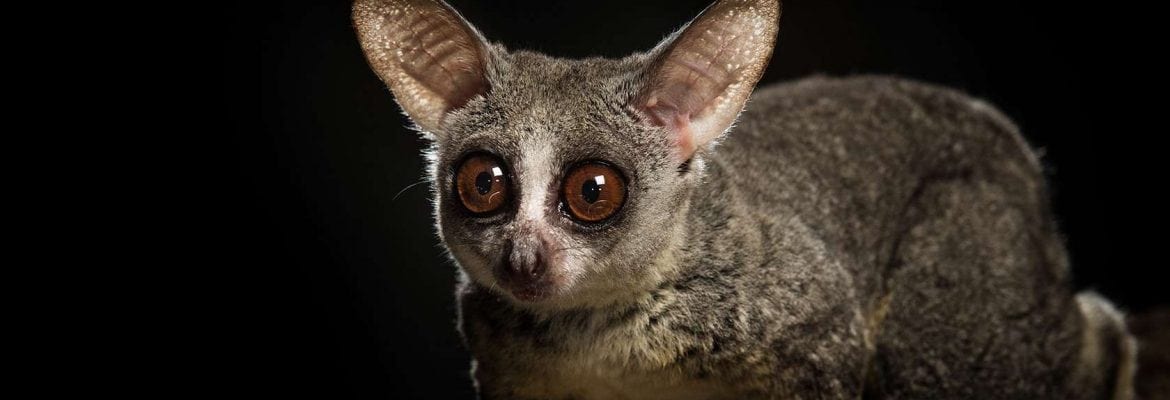
Senegal bushbaby
Conservation status: IUCN – LC (least concern); CITES – Appendix II
Geographic range: Senegal, Savanna, forested and bush regions of Africa including Sudan, Somalia, Ethiopia, Kenya, Tanzania.
Physical description: This small, interesting looking primate is approximately 16 cm long, with a tail of about 20 cm and females weigh around 190 g, while males weigh about 210 g. Their bodies are built to help them jump between the branches of trees and they usually have short, grey or dark brown coats with yellowish areas around the neck. They have a wide head with a short face and black circles around their eyes. There is a white patch of fur running between their disproportionally large eyes and along with their noses. Their large eyes give them superior vision during the night but make them very sensitive to the daylight. Senegal bushbabies have very unique ears as they have a complex wrinkle labyrinth and they can move both ears individually. This helps them better identify the source of any sounds they hear.
Biology: Senegal bushbabies are night active and live in trees. They can jump up to 5 meters in a single leap and their fantastic vision and hearing allow them to do so even in the darkest nights. They live in small groups of up to 5 individuals, which are usually comprised of a female and her adult offspring. Their vocalizations can be categorized into three basic categories: danger-aggression, social contact, and warning. They tend to be the loudest in the early morning and in the late evening. They moisten their hands using urine, which is believed to both marks their territory as well as improves their grasp on branches.
Lifespan: In the wild 3-10 years, in captivity 16 or more years.
Food habits: The Senegal bushbaby is an omnivore, which eats various small animals (also birds and insects), fruit, berries, seeds, eggs, flowers and sap.